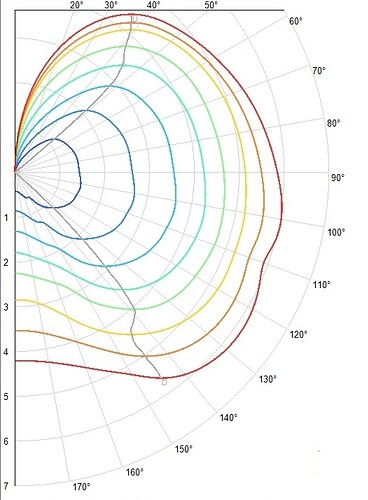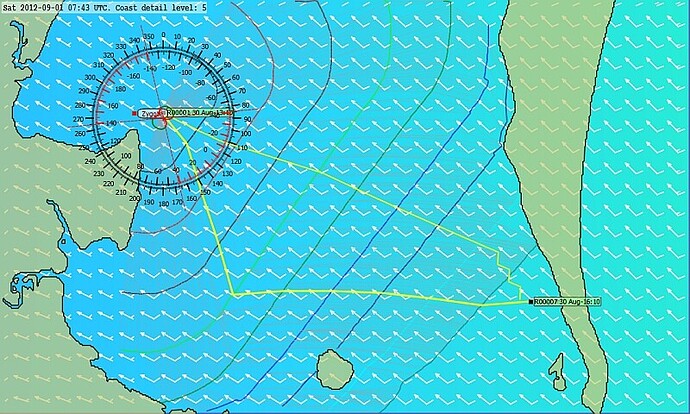Luis: Hi!
I’m quite reluctant to post a *.csv of my ‘fake’ BCC polar.
That’s not just because I want to avoid Barry Obama and his minions who read all our posts and e-mail.
More serious than that, I don’t want to besmirch the reputation of Lyle C. Hess and the BCC. Once a polar is loose on the Net, I fear someone could (mis)represent it as the genuine polar of a BCC.
Don’t get me wrong. I find QtVLM and my fake polar quite useful. It changed my thinking about our usual sailing routes.
I used to look at gribs, the wind, and the tide to try to guess the likely wind shift, then work out which side of the route to favour, especially if working to starboard early would put the tide on Z’s lee bow when working upwind, for example.
QtVLM favours more tacking on shorter legs in the middle of the tacking cone. And does a neat job stepping through the wind shifts, as predicted in the grib.
Did I mention that Moreton Bay is tidal? If you’ve time on your hands, point your browser to http://www.marine.csiro.au/~and371/seq/anim_mb2_plan.gif. That’s a quasi real-time animated gif. If you look at my graphic from the earlier post in this thread, you’ll see Z’s usual route from Reef Point to The Sandhills. Just so happens that staying in the middle of the tacking cone also puts Z through the minimum tide zone.
To get back to why and how I made a fake polar:
- Z has Raymarine S60 wind and water speed instruments, linked with GPS data via a Raymarine electronic charter. Not as good as Ockham in calculating TWA and TWS, but quite serviceable.
Or should be.
My efforts to get good data were not satisfactory. I plan to change the anemometer and wind vane of the mast head wind instrument next month. Might help. And, after next haul out, try again with a clean bottom, this time using OpenCPN to collect the data (and an OpenCPN plugin that should generate a polar directly from that data!).
One of my problems with my earlier hand-collected data was that my sailing is asymmetric. Either Z’s hull is more asymmetric than I think, the deck gear is asymmetric, or my sail trim is asymmetric. Whatever, Z usually performs much better upwind on starboard than port.
Note that Z is always in live aboard mode. And not infrequently has a minor list to starboard because of gear and equipment stowage. That by itself may be enough to generate that asymmetry in upwind performance.
I could add that a knight’s chess move away from Z at the marina (if you get my drift) is Bob on a Benetau. Bob is v competitive and every Saturday he takes on a couple of grinding gorillas and goes around the buoys. Even in full live-aboard mode (Bob even carries a washing machine on board!), Bob regularly beats the keen racers who are in lightship condition.
So my complaints about Z’s weight and stowage condition might be nothing. And the real problem might be my inadequacy in sail trim and helming.
- Making a fake polar takes less than 30 minutes, if you have your log book or other sail data. QtVLM comes with a half dozen polars. Pick one belonging to a boat about the right LWL and open it in Excel. Then massage the data to suit what you have in your log book.
Cheers
Bil (who spent a hour today teasing apart some of the complexity of the verb ‘set’ for the latest version of Zwords: as in “set the anchor”, “set sail”, and “set of the tide” or “set by the tide”. And the noun ‘set’ in “generator set”. It should be available for download at the usual URL)


